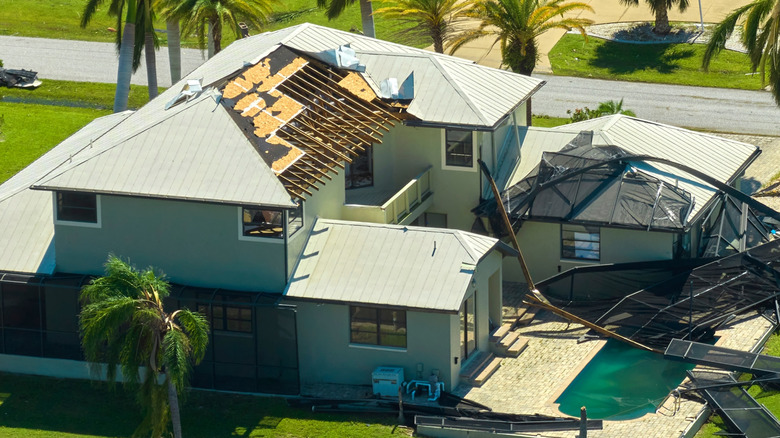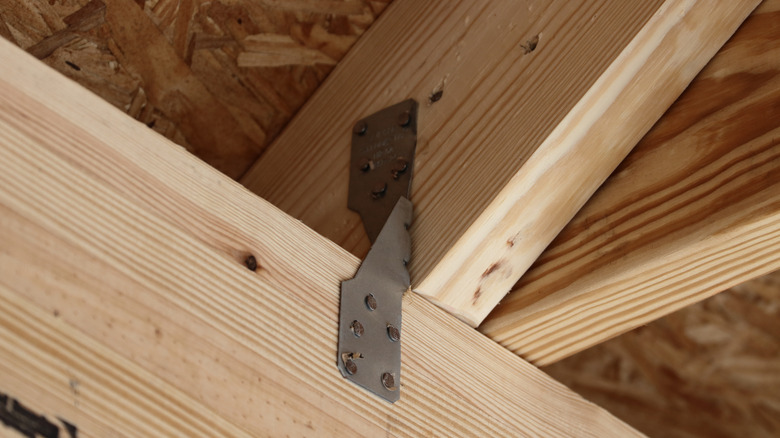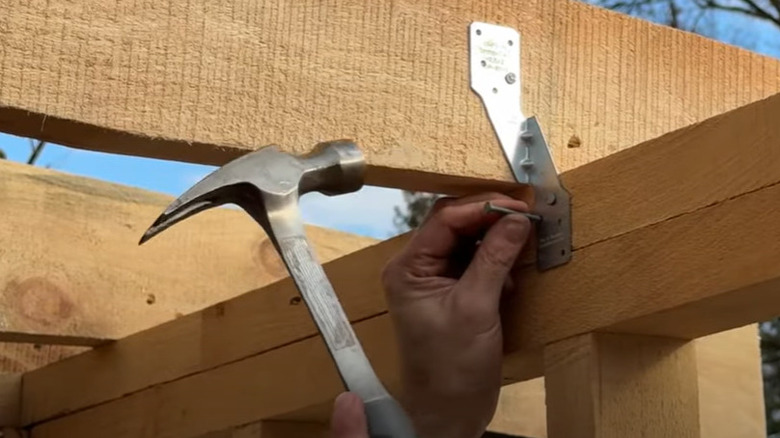The Most Effective Way To Protect Your Roof During A Tropical Storm
The wind is picking up, and somewhere nearby, the low rumble of a tropical storm grows louder. If you're a homeowner in hurricane country, perhaps you know the feeling of anxiety that creeps in before the skies turn gray. One loose shingle or a ridge that wasn't properly secured can lead to a costly disaster. However, a few smart moves can save you from that chaos. Anchoring your roof with hurricane straps, for instance, can help protect your home during tropical storms.
Although forces of nature can't be tamed, they can be respected and planned for. The National Oceanic and Atmospheric Administration uses real-time tracking systems to provide actionable storm forecasts. The Atlantic hurricane season runs from June 1 to November 30, with the peak period from mid-August to mid-October when storms are most likely to strike. Taking practical steps to reinforce your roof is the best way to stay ahead, because when the skies darken and the winds pick up, the last thing you want is to be standing there, praying your roof doesn't take flight.
How hurricane straps protect your roof during a storm
When tropical storm winds blow at between 39 and 73 miles per hour, your roof is the first to take the hit and, unfortunately, the first to succumb if it's not secured correctly. That's why getting your roof trusses and rafters strapped down is important to prepare your home for hurricane season. Hurricane straps are metal fasteners that connect these key components directly to the upper beams of your exterior walls. The connection locks everything together, creating a continuous path from the roof all the way down to your foundation. As such, it becomes much harder for winds to shift the structure.
These straps make your home structurally stronger. Every piece, from trusses to walls, works together as a single unit. That means your home handles wind forces more evenly. Instead of one beam or joint taking the brunt of the impact, the load is spread across the entire structure. This kind of distributed reinforcement lowers the risk of catastrophic damage during severe weather.
Of course, all that added strength doesn't come for free. If you're adding hurricane straps to an existing roof, you're looking at somewhere around $500 to $2,000. The exact price, however, varies depending on the number of straps you need and how accessible your attic is.
Easy way to install hurricane straps
Corners, roof edges, and any sections of your roof that stick out are most vulnerable to high winds. Straps will naturally make the biggest impact there. Once you determine the area, gather your tools to hurricane-proof your home. You'll need a small hammer for tight spaces, a tape measure to mark strap locations, chalk, and a sturdy step ladder if attic access is tricky. Don't forget your safety gear, like gloves, glasses, and a head lamp. Good lighting goes a long way to help you avoid bumping into beams. For materials, have your hurricane straps ready along with the nails recommended by your manufacturer and local building code. And since attics can get hot during long work sessions, keep a water bottle close and take short breaks when needed.
Once you're set, find where each rafter meets the top plate of the wall. Mark the connection points. Make sure you space them according to your local codes. Position each strap so it hugs both the rafter and wall plate snugly. Then, fasten the upper end to the rafter or truss first, followed by the bottom. Ensure that the metal sits flat against the wood. As you nail, keep your angle steady – overdriven nails can split the wood and weaken the strap's grip. In case the corners feel tight, use a compact hammer or palm nailer. Also, avoid leaving any empty nail holes in the strap; each one of them counts for strength. Skipping even one can compromise the whole system.


